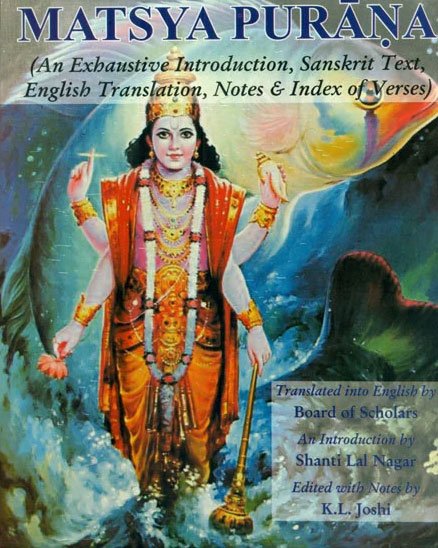The Matsya Purana (critical study)
by Kushal Kalita | 2018 | 74,766 words | ISBN-13: 9788171103058
This page relates ‘Koshala Dynasty’ of the English study on the Matsya-purana: a Sanskrit text preserving ancient Indian traditions and legends written in over 14,000 metrical verses. In this study, the background and content of the Matsyapurana is outlined against the cultural history of ancient India in terms of religion, politics, geography and architectural aspects. It shows how the encyclopedic character causes the text to deal with almost all the aspects of human civilization.
Part 2.2c - The Kośala Dynasty
The Matsyapurāṇa provides a list of thirty (30) kings of the Ikṣvāku dynasty of Kośala as the linear descendants of Bṛahadbala who was killed in the Bhārata war by Abhimanyu.[1]
The list as follows—
- Bṛhatkṣaṇa/Bṛhatkṣaya/Bṛhatkṣatra,
- UrukṣayaJātakṣaya,
- Vatsavyūha,
- Prativyūha/Prativyoma,
- Divākara,
- Sahadeva,
- Brahadaśva,
- Bhānuratha
- Pratitaśva
- Supratika,
- Marudeva,
- Sunakṣattra,
- Kinnara-Puṣkara,
- Antarikṣa,
- Susena/Suparna,
- Amitrajita/Sumitra,
- Bṛhadraja/Bharadvāja,
- Dharmi,
- Kṛtañjaya/Dhanañjaya,
- Ranañjaya,
- Sañjaya,
- Sākya,
- Sudhodana,
- Sidhārtha (i.e., Gotama),
- Rāhul,
- Prasenajita,
- Kṣudraka/Vidudabha,
- Kṣulika,
- Suratha and
- Sumitra.
The Iṣkvāku dynasty of Kṣatriya rulers came to an end with Sumitra. It is traditionally believed that thirty (30) kings of this dynasty altogether reigned for 1504 years during the period 3138 -1634 B.C.
Footnotes and references:
[1]:
Ibid., 271.4-18; 273.52-53
